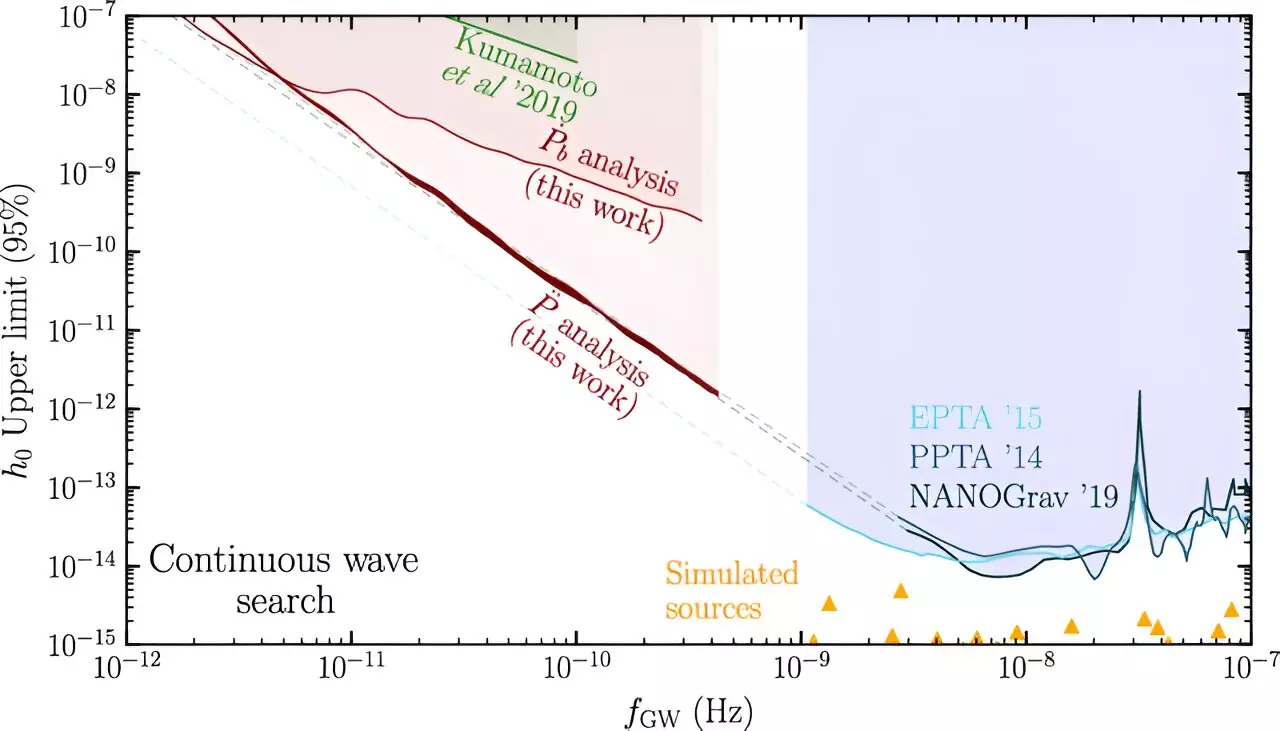Exploring the vast mysteries of the universe has always been a fascinating endeavor for scientists. Recently, a team of physicists has made a groundbreaking discovery in the field of astrophysics by developing a method to detect gravity waves with incredibly low frequencies. These gravity waves have the potential to provide valuable insights into the early phases of mergers between supermassive black holes, shedding light on the heaviest objects in the universe.
The method devised by this team can detect gravitational waves that oscillate at frequencies as low as once every thousand years, which is 100 times slower than any previously measured gravitational waves. These waves, originating from the farthest corners of the universe, have the power to influence the propagation of light. By studying these low-frequency gravitational waves, researchers aim to construct a comprehensive narrative of cosmic history, similar to the revelations brought about by the discovery of the cosmic microwave background.
The study, spearheaded by Jeff Dror, Ph.D., an assistant professor of physics at the University of Florida, and William DeRocco, a postdoctoral researcher at the University of California, Santa Cruz, was published in Physical Review Letters. Gravitational waves act as disturbances in the fabric of spacetime, exhibiting characteristics akin to waves on the ocean or sound waves. The frequency and amplitude of these waves offer essential information about their origins and ages, providing researchers with a deep understanding of the universe’s dynamics.
Dror and his team introduced a novel method of detecting gravitational waves by analyzing pulsars and neutron stars emitting radio waves at precise intervals. The hypothesis put forth was centered on observing a gradual slowdown in the arrival of these signals, which could signify the presence of new gravitational waves. By examining existing data on pulsars, Dror extended the detection capabilities to frequencies as low as 10 picohertz, a significant advancement from previous efforts that focused on nanohertz-level waves.
While gravitational waves with nanohertz frequencies have been detected in the past, limited information is available about their origins. Two prominent theories have emerged to address this enigma. The first theory suggests that these waves stem from the merger of supermassive black holes, offering researchers a unique opportunity to study the behavior of these enigmatic cosmic entities. The second theory posits that these waves were generated by cataclysmic events during the early stages of the universe. Further exploration of gravitational waves at lower frequencies may help discern between these possible scenarios, unraveling the mysteries of the cosmos.
Looking ahead, Dror emphasized the importance of analyzing more recent datasets to enhance the understanding of low-frequency gravitational waves. The utilization of UF’s HiPerGator supercomputer for running simulations on mock data is expected to accelerate the exploration of cosmic history, providing unprecedented insights into the evolution of the universe. By delving deeper into the realm of gravitational wave detection, researchers are poised to unveil new revelations about the universe’s origins and dynamics, pushing the boundaries of astrophysical knowledge.


Leave a Reply